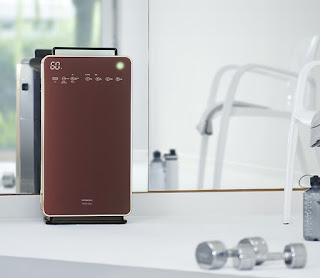Types Of Air Purifiers
Types of best quality air
purifiers:
Active Carbon filter: This
type of filter is employed to purify soluble gases like chlorine, carbon
monoxide gas, nitrogen, ammonia and organic material like dead algae, leaves or
the other dead thing washed into a air body. The porous nature of the carbon
(charcoal) helps to soak up chlorine and pollutants like pesticides. Generally,
household carbon filters accompany a lining of activated silver that kills
bacteria.
Read More : How
to choose the right air purifier for full house use?
Bio-sand filter: It's a
concrete or plastic box that's crammed with layers of sand and gravel, which
removes pathogens (micro-organisms in air that make us sick) and suspended
solids from contaminated air. Air (it should be free from dangerous chemicals
since the filter cannot remove most of the chemicals) is poured into the
highest of the filter and picked up during a safe storage container. The
organisms which cause infectious. Bacteria and other micro-organisms grow
within the top 2cm of sand, which is named the biolayer. The micro-organisms at
the biolayer eat away the pathogens within the air thereby improving the air
quality. It removes suspended particles and pathogens and may filter 12-18
litres each batch.
Reverse Osmosis filters:
Reverse Osmosis (RO) system offers a multi-stage filtration of air by combining
active carbon and also particle filtration. Here, the faucet air is formed to
undergo a membrane (a polymer film) that has very small-sized pores and this
comb out minerals and micro-organisms in air. The impurities collected are then
flushed out through an outlet pipe. A RO air purifier improves the taste of air
but, it's difficult to mention that the air is going to be one hundred pc safe
as sometimes thanks to holes within the filter, some bacteria can get through
the filter.
Ultra Violet (UV) filters:
UV light (minimum level radiation) is passed on air to kill bacteria and other
microbes by attacking the DNA in cells. These filters
remove pesticides by up to 99%. This filter is effective in removing all kinds
of pathogens but it's not effective for removing suspended particles,
chemicals, taste, smell or colour.
These filters drain out bacteria
within the air through the tiny sized pores in them. It removes chlorine and E.
Coli bacteria up to 99%. Its safe storage capacity prevent air to urge
re-contaminated.
Ion exchange resins filters:
Here the air is skilled resins that soften air by absorbing the minerals
present. These filters can soften the air by sucking up the salts present and
may also completely de-mineralise the air if they're made accordingly.




Comments
Post a Comment